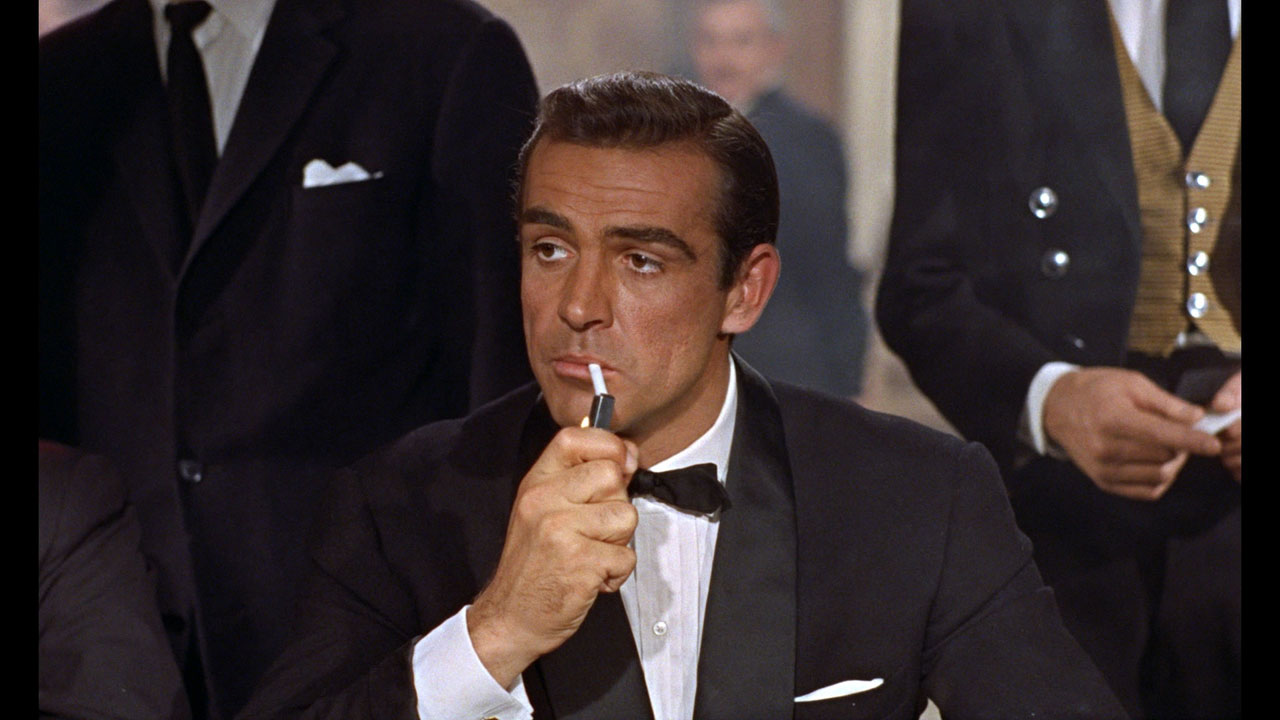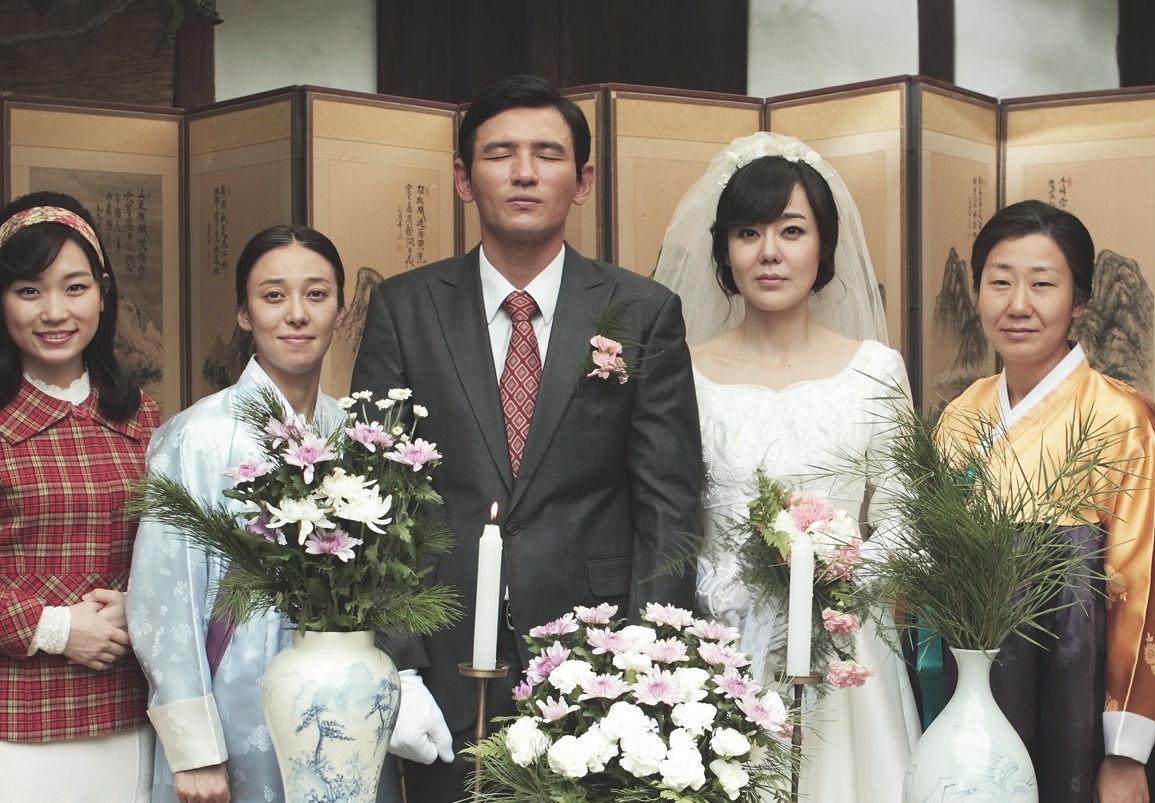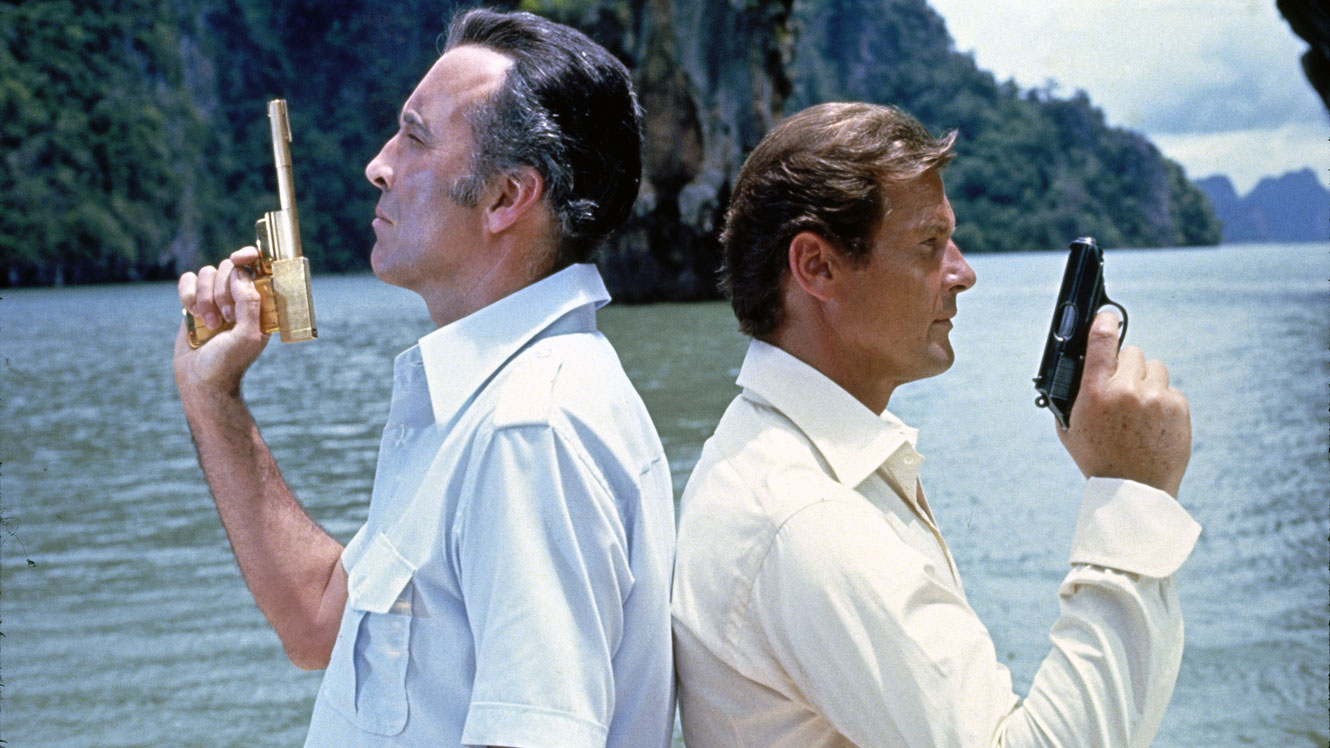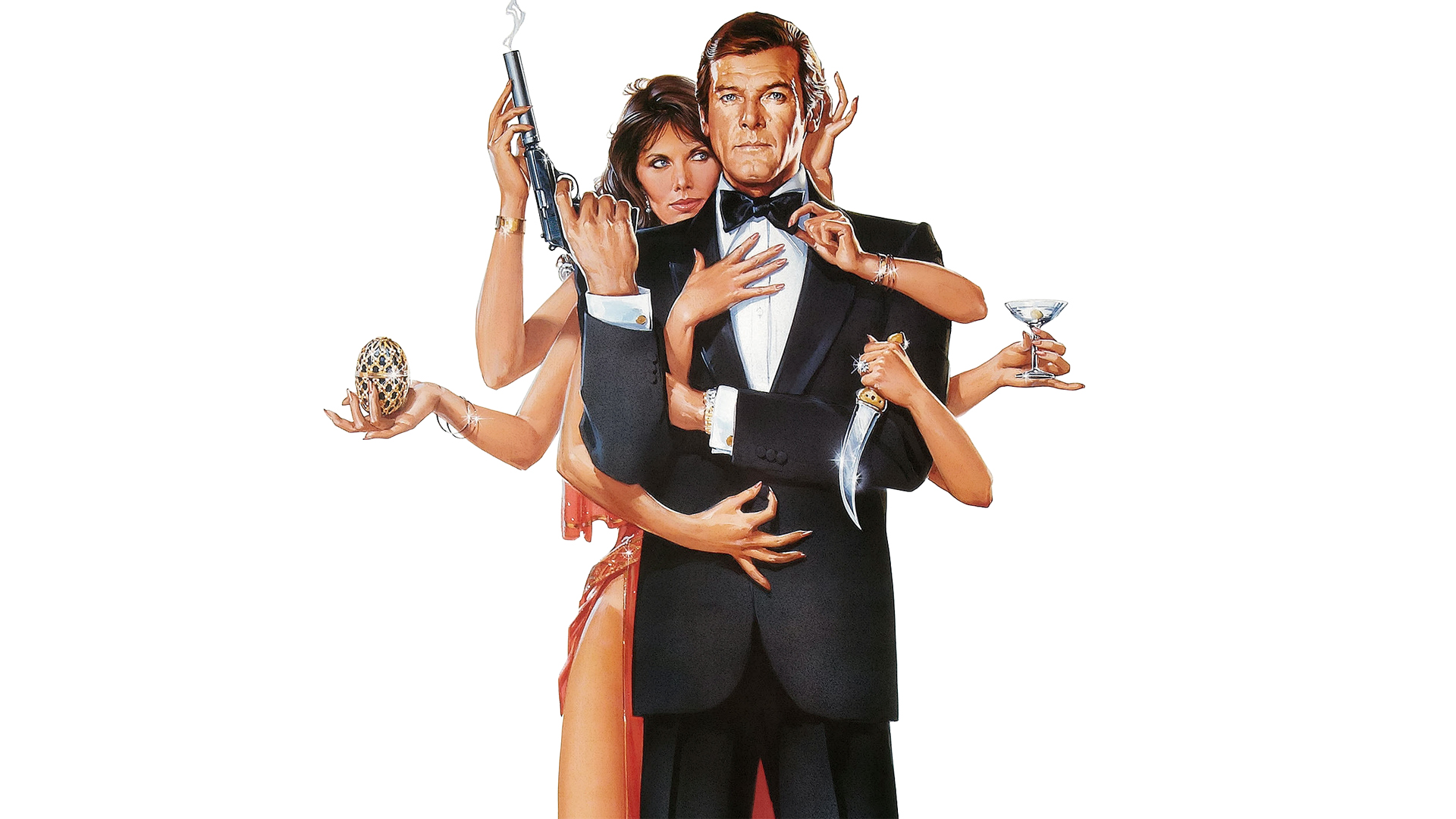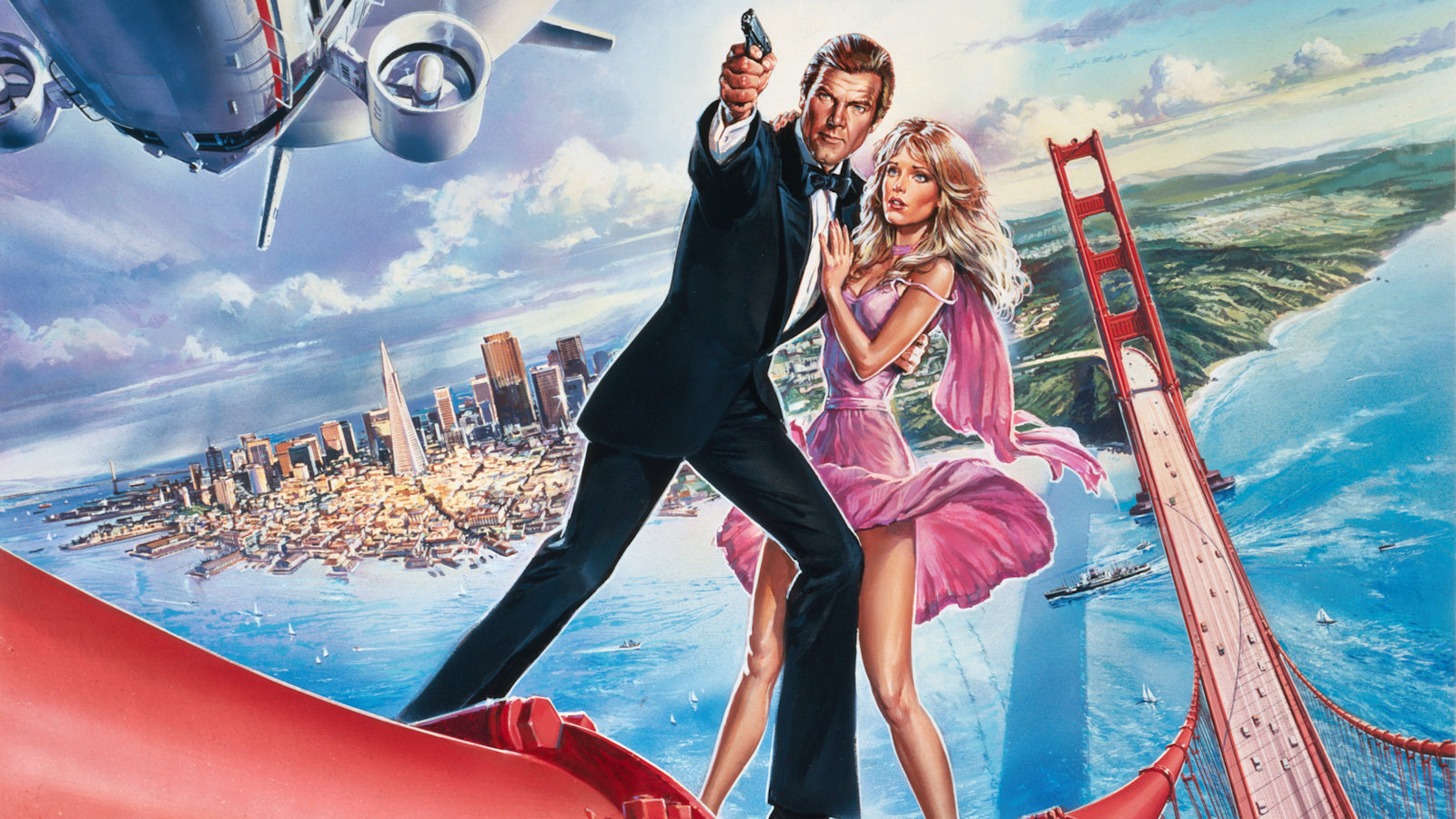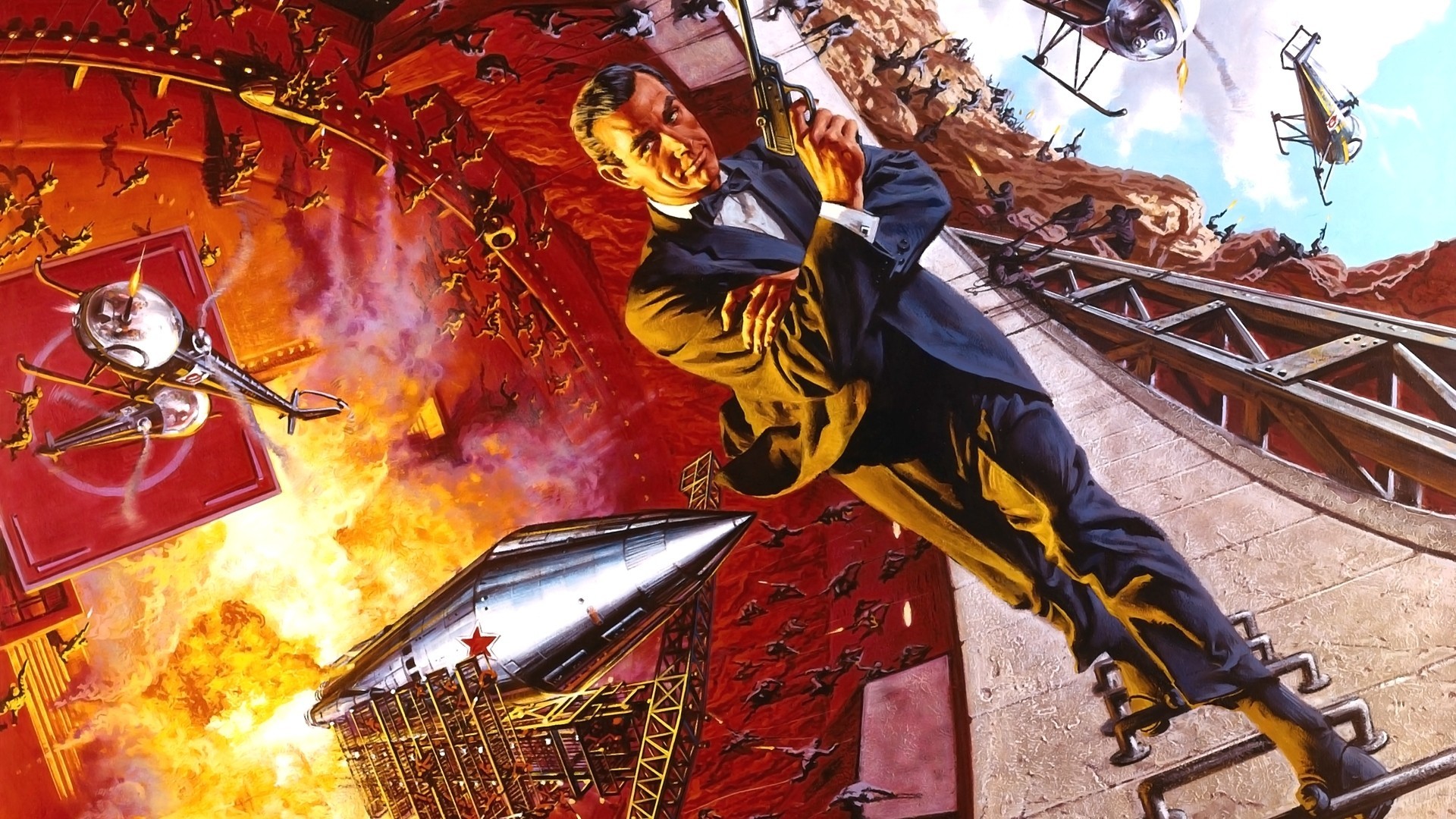It’s no secret that this writer is a James Bond aficionado (for a gushing example, see here). In the run-up to the 24th film in the EON-produced Bond series, SPECTRE, we look back on past Bonds, in chronological order.
Dr. No (1962, Dir. Terence Young):
The girl took her hand away from her knife. She reached up and stripped off the diving mask and stood swinging it. She seemed to think she had the measure of Bond. She said, with some of the sharpness gone from her voice, ‘What’s your name?’
‘Bond. James Bond.’
— Ian Fleming, Dr. No
Consider these names for a moment: Richard Burton. Peter Finch. David Niven. James Mason. Peter Anthony. Imagine each of them lounging in a swank London casino far past the witching hour, a cigarette dangled carelessly from the lips, eyeing a haughty high-class lass across the chemin de fer table. The woman has lost once again, but still she arches her eyebrow at him. She purrs: “I admire your luck, Mister…” The sentence dangles, a challenge and a come-on.
The cigarette is lit. Bond. The lighter flicks closed, like a bullet chambered in a Walther PPK. James Bond.
Given the talent in that list above — except for Mr. Anthony, about whom little is known except the fact that he was a “professional model” (take a moment to shudder at that one) — you can probably imagine the scene coming off quite well. Burton’s whiskey-soaked voice is a character by itself. Niven would allow himself a sly, offhand smile. Mason would take in the woman with a wary little flick of the eyes. All of them British, all cool and detached. And they all had one thing in common: they were under serious consideration to play James Bond in the first cinematic adaptation of Ian Fleming’s novels.
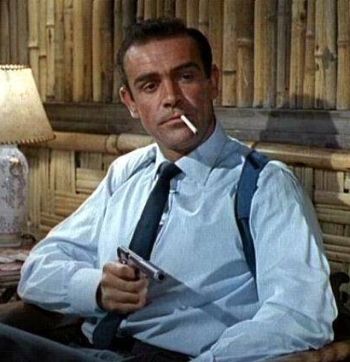 Now consider the actual scene from Dr. No, and our first glimpse of Sean Connery as Bond, and you understand in that one moment why James Bond has persisted for over 50 years. Derided at the outset as an “overgrown stuntman” by none other than Fleming himself, Connery was the son of a truck driver, a former Mr. Universe contestant, an unashamed Scot who was as rough as the Edinburgh streets he grew up on. He wasn’t a polished actor or a box-office draw. But whether it was due to expedience, a flash of insight, or the insistence of Dana Broccoli (wife of co-producer Albert Broccoli), who lobbied hard for the young actor because of his raw charisma, Connery it was, and with him arrived a new age in cinema.
Now consider the actual scene from Dr. No, and our first glimpse of Sean Connery as Bond, and you understand in that one moment why James Bond has persisted for over 50 years. Derided at the outset as an “overgrown stuntman” by none other than Fleming himself, Connery was the son of a truck driver, a former Mr. Universe contestant, an unashamed Scot who was as rough as the Edinburgh streets he grew up on. He wasn’t a polished actor or a box-office draw. But whether it was due to expedience, a flash of insight, or the insistence of Dana Broccoli (wife of co-producer Albert Broccoli), who lobbied hard for the young actor because of his raw charisma, Connery it was, and with him arrived a new age in cinema.
There had been spy films before: either breathless, witty Hitchcock-style chase movies, or gritty affairs befitting the ugliness of what spying was actually like. Broccoli and co-producer Harry Saltzman, both from the other side of the Atlantic, had landed on something different, something as blunt and straightforward as a Mike Hammer potboiler, gussied up with glossy production values and a dash of Brit elegance. In the beginning, Bond movies weren’t meant to be A-list pictures, or prestige projects; like Fleming’s books, they were dirty little thrillers livened up with the snobbery of high living.
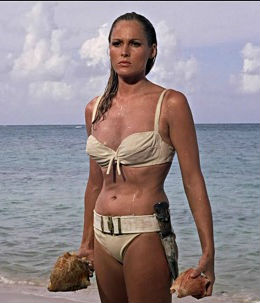 It can be difficult to evaluate Dr. No in the wake of everything that has happened since. Compared to today’s action movie it’s as tame as it gets: a blue-screened car chase here, a few abbreviated fisticuffs there. The rest of the time we’re loping about sunny Jamaica (another sign that this ain’t your father’s spy movie), taking in the sights, most notably Ursula Andress and that daring white bikini emerging from the ocean. The biggest gadget in the film is a tank painted to look like a dragon. Save for John Barry‘s immortal James Bond theme, the soundtrack is stuffed with incongruous Caribbean ditties and awkward orchestral riffs on “Three Blind Mice.” The villain’s plot could come from a Fu Manchu serial, and indeed, Joseph Wiseman in yellowface as Dr. No is the devious Dr. Fu in all but name. Yet the movie leaves an indelible impression more than five decades later because of Connery’s Bond. Amoral, blithe, yet professional, this was a fully formed anti-hero, at home ordering up a cocktail in a dinner jacket or administering a beat-down even after getting tortured. Connery wasn’t a cold fish either; unlike the typical stiff-lipped English protagonist, he wore his appetites on his sleeve. The fact that he didn’t resemble anyone’s idea of a cultured agent was part of the joke, while the character’s sadism and sexism injected a sense of play into the moviemaking. It was as if a ’40s serial had merged with a comic strip, partied it up with Hugh Hefner for a few nights, and come out at the other end smiling, apertif in hand. With fears of nuclear disaster rampant in 1962, it somehow made sense that the security of the Western World depended on a playboy assassin. The Bond movies caught on with audiences because they weren’t nice or polite. They were in your face and not to be denied.
It can be difficult to evaluate Dr. No in the wake of everything that has happened since. Compared to today’s action movie it’s as tame as it gets: a blue-screened car chase here, a few abbreviated fisticuffs there. The rest of the time we’re loping about sunny Jamaica (another sign that this ain’t your father’s spy movie), taking in the sights, most notably Ursula Andress and that daring white bikini emerging from the ocean. The biggest gadget in the film is a tank painted to look like a dragon. Save for John Barry‘s immortal James Bond theme, the soundtrack is stuffed with incongruous Caribbean ditties and awkward orchestral riffs on “Three Blind Mice.” The villain’s plot could come from a Fu Manchu serial, and indeed, Joseph Wiseman in yellowface as Dr. No is the devious Dr. Fu in all but name. Yet the movie leaves an indelible impression more than five decades later because of Connery’s Bond. Amoral, blithe, yet professional, this was a fully formed anti-hero, at home ordering up a cocktail in a dinner jacket or administering a beat-down even after getting tortured. Connery wasn’t a cold fish either; unlike the typical stiff-lipped English protagonist, he wore his appetites on his sleeve. The fact that he didn’t resemble anyone’s idea of a cultured agent was part of the joke, while the character’s sadism and sexism injected a sense of play into the moviemaking. It was as if a ’40s serial had merged with a comic strip, partied it up with Hugh Hefner for a few nights, and come out at the other end smiling, apertif in hand. With fears of nuclear disaster rampant in 1962, it somehow made sense that the security of the Western World depended on a playboy assassin. The Bond movies caught on with audiences because they weren’t nice or polite. They were in your face and not to be denied.
Broccoli and Saltzman also had the benefit of the right talent assembled behind the camera. Director Terence Young was a Bondian figure himself, a two-fisted bon vivant and World War II vet who happened to enjoy the expensive things in life. Taking Connery under his wing and managing the actor’s Saville Row wardrobe and performance, he would set the tone for everything that would follow. Young recognized that the humor in Fleming’s novels arose from the ridiculous situations his character found himself in, and decided to let Bond in on the fun — thus the quips and one-liners, and the unflappability in the face of danger. While Bond’s invincibility would grow stale in later films, Young brought a necessary whiff of menace to Dr. No; crucially, we never forget that Bond is a killer in a killer’s world, as demonstrated in the famous “You’ve had your six” scene.
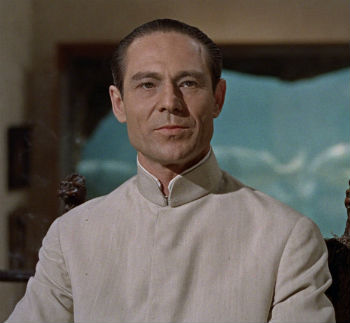 Dr. No might seem primitive and even a bit wan compared to the globetrotting extravaganzas of later entries, but it also comes closer than the other films to approximating the feel of a Fleming novel, down to the pulpy simplicity of it all. Young shuffles all the elements of prime cinematic Bond smoothly into place: the redoubtable Bernard Lee and Lois Maxwell as M and Moneypenny; those comely women of all races and allegiances, all so willing to fall into Bond’s arms and yet somehow so distant and unknowable; the jet-setter glamour (back when a trip to Jamaica was above most folks’ pay grades) and the space-age production design (courtesy of Ken Adam); and a villain eager to destabilize the world, but not before a banquet at his secret lair and delicious dialogue like “I misjudged you, Mr. Bond — you are nothing but a stupid policeman.” Editor Peter Hunt was another key contributor, cutting action beats on the action, removing frames, even forsaking continuity for the sake of energy and rhythm, and his style brought the jazz to movie editing syntax.
Dr. No might seem primitive and even a bit wan compared to the globetrotting extravaganzas of later entries, but it also comes closer than the other films to approximating the feel of a Fleming novel, down to the pulpy simplicity of it all. Young shuffles all the elements of prime cinematic Bond smoothly into place: the redoubtable Bernard Lee and Lois Maxwell as M and Moneypenny; those comely women of all races and allegiances, all so willing to fall into Bond’s arms and yet somehow so distant and unknowable; the jet-setter glamour (back when a trip to Jamaica was above most folks’ pay grades) and the space-age production design (courtesy of Ken Adam); and a villain eager to destabilize the world, but not before a banquet at his secret lair and delicious dialogue like “I misjudged you, Mr. Bond — you are nothing but a stupid policeman.” Editor Peter Hunt was another key contributor, cutting action beats on the action, removing frames, even forsaking continuity for the sake of energy and rhythm, and his style brought the jazz to movie editing syntax.
Couple all of that with Connery’s performance and a story that acknowledged Cold War tensions while thumbing its nose at them (the film marks the first appearance of SPECTRE, the dastardly terrorist organization with no particular country of origin, all the better to avoid messy politics), and you have a cultural moment captured in time — and that moment is unapologetically callous, violent, and sexy. The blunt instrument that is Dr. No does its job with a minimum of fuss, and it stands as a unique creature, a formula movie before it all became formula, before excitement calcified into expectation. Depending on your beliefs on how the action movie has evolved since then, Dr. No is either owed a debt of gratitude or has a lot to answer for. But as a bruised yet unbowed Connery takes Andress as his prize, the two of them hunkered down in a motorboat in the impossibly blue Caribbean for a final smooch, one cannot deny the movie’s power and influence. Not bad for a series that began life one step removed from a Monogram serial.
